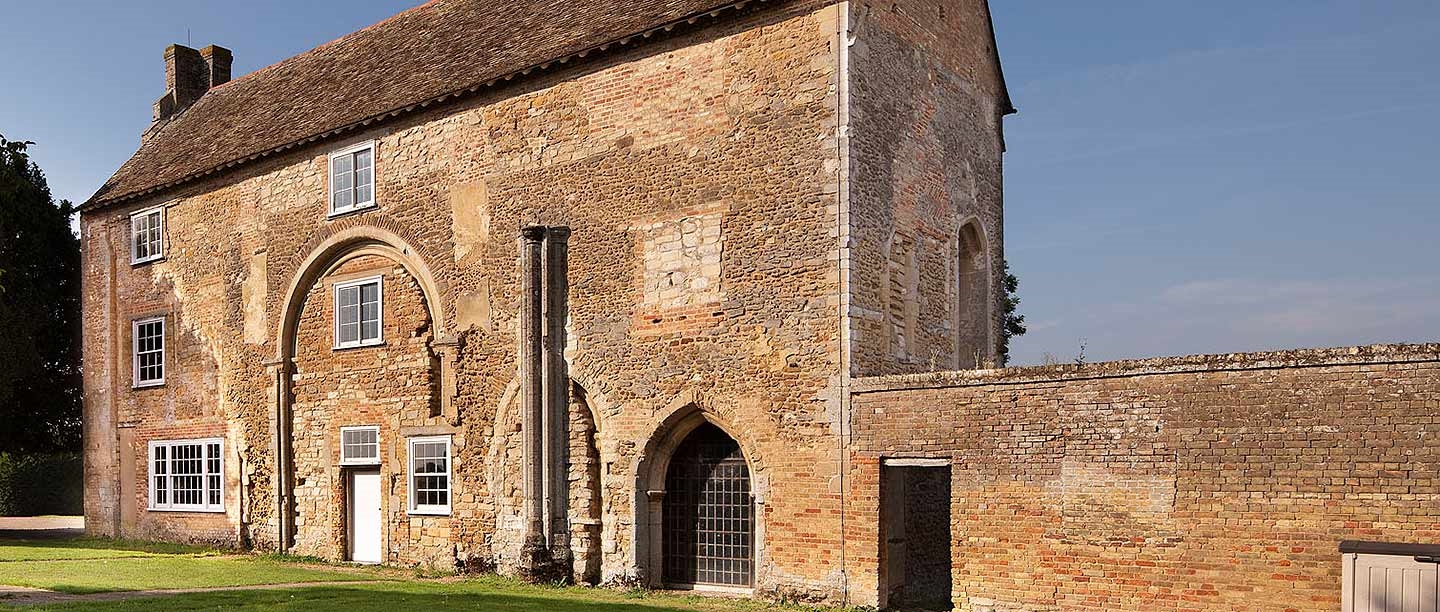Before the monastery
Denny stands on a small ‘island’ of raised ground in what was once a watery landscape of peat fens and marshes. People have left their mark on the surrounding landscape for millennia.
Pottery dating from between the 2nd and late 4th centuries AD has been found at the site, as have some 4th-century coins, suggesting the presence of a Roman settlement at Denny. A series of linear earthworks south-east and west of the abbey are boundary ditches, probably associated with nearby Roman settlements, while rectangular earthworks to the south and east were probably paddocks and may also be Roman.
The history of the site is then obscure until almost a century after the Norman Conquest of 1066.
The Benedictine abbey
The monastic history of Denny starts in the mid 12th century when Robert, chamberlain of Conan IV, Duke of Brittany and Earl of Richmond, decided to found a monastery. Modest in scale, it was a cell, or offshoot, of the great Benedictine cathedral priory at nearby Ely.
Robert’s initial plan was to settle the monks at Elmeney (a now deserted site about a mile from Denny). However, the location was liable to flooding and the donation of land by a local lord, Aubrey Picot, allowed the monastery to be sited at Denny instead. According to a late 12th-century source from Ely Cathedral, this was ‘in a position more suitable for the construction of a church and its buildings and for the makings of gardens and coppice woods’.
The monastery was dedicated to Saints James and Leonard. The first prior was Reginald, a monk from Ely.
The wording of Denny’s foundation charter speaks of Robert’s religious motives, stating he founded the monastery ‘for the salvation of his soul’. His pious intentions are similarly revealed by his decision to become a monk at Ely, where he died soon after taking his vows. This was probably in 1159. By then work on the church at Denny was sufficiently well advanced for Bishop Nigel of Ely to consecrate its high altar.
The Benedictine occupation of Denny was short lived. For some reason, the priory never thrived, and by 1170 its monks had returned to Ely. But Denny’s monastic history was far from over.
The Templars
The 12th century was a period of great monastic revival and religious fervour. It witnessed the foundation and proliferation of several new monastic orders, including the so-called military orders. Their members, including fighting men, lived under monastic vows of poverty, chastity and obedience, but dedicated their lives to the defence of the Christian kingdoms in the Holy Land.
One of the most important of these new military orders was the Knights Templar. They were founded in 1118 in Jerusalem, then under Christian control, to protect the Holy Land and pilgrims there against Islamic armies.
The Templars spread across Europe and reached England in 1128. People across society, from princes to peasants, made gifts of land and money to the order.
In around 1170, the Bishop of Ely agreed to transfer Denny and its estates to the Knights Templar. The reasons for this are not known, but the transfer was approved by the pope in Rome and also by King Henry II. The monastery became a Templar preceptory, so called because it had a ‘preceptor’ at its head. Denny was never a base for fighting men, instead becoming a retirement home for aged and infirm members of the order.
The Templars added to Denny’s possessions, and in the mid 13th century acquired the income from the nearby parish church at Great Wilbraham explicitly for the care of infirm members of the order housed at Denny. Other patrons included Henry III, who in 1244 sent a barrel of wine to the preceptory. Clearly Denny’s benefactors included the highest in the land.
The beautifully carved capitals on the doorway at the west front of the church date to the late 12th century, when the Templars were adapting the building for their use. They also added a stone-built chamber to the south-west of the entrance, possibly as a residence for the chaplain who celebrated Mass for the community.
The Templars would also have used the pre-existing Benedictine dormitory, where the brethren slept, and refectory, used for communal dining. The location of these buildings has yet to be firmly determined.
An inventory made in 1308 reveals that the community at Denny lived austerely. There were 11 beds in the dormitory, and the furnishing of the refectory consisted of little more than benches and tables. There were three silver chalices in the church; together with vestments and books, these were used to celebrate the Mass. The preceptory had an annual income of about £66, about what would be expected for a small to mid-ranking monastery.
The end of Templar Denny
The coastal city of Acre, the last major Crusader stronghold in the Holy Land, fell to Muslim armies in 1291. The Templars retreated to Cyprus but had largely lost their crusading function. Their wealth and power had long attracted envy and resentment, but the loss of the Holy Land now called the order’s whole existence into question.
In 1307, King Philip IV of France ordered the arrest of all Templars in his kingdom, and in 1308 Edward II issued a similar instruction in England.
The 11 Templars at Denny were placed under arrest and taken to Cambridge Castle. Their names show that many came from as far away as Yorkshire and Scotland. There can also be little doubt that at least some had seen active service in the Holy Land: one was said to have joined the order in Syria.
The men were taken to the Tower of London in September 1309 to await trial. The trials dragged on until 1311. One by one, the former brethren formally abjured and were absolved. They were then sent into the custody of various bishops ‘to place in certain monasteries to do penance’.
In 1312 the Templar order ceased to exist, disbanded on the orders of the pope.
The Poor Clares
The ownership of Denny, like other Templar properties, was transferred to the Knights Hospitaller, another military order. They made no use of the site, which in 1324 reverted to the Crown. Three years later, the king granted Denny in perpetuity to Mary de Valence (c.1304–77), the rich widow of Aymer de Valence, Earl of Pembroke. It was she who established the third and final religious community at Denny.
The early history of the nunnery is intimately related to the community of Poor Clares (Franciscan nuns) at nearby Waterbeach, founded in 1294 by Dionysia de Munchensey. She died in 1314 and bequeathed many of her properties, including patronage of the Waterbeach nunnery, to her kinswoman Mary de Valence.
The nunnery at Waterbeach had been built on a site liable to flooding. In 1339, Mary secured permission to migrate the community to Denny. The first nuns arrived in 1342, though opposition to the move among the nuns at Waterbeach meant that the process was not completed until 1351.
The Poor Clares took their name from St Clare (d.1253), a close friend of St Francis of Assisi (d.1226). Wearing grey-brown habits, they lived an austere, strictly enclosed life that revolved around the communal chanting of religious services in their church. Only three monasteries of Poor Clares were founded in England, all with the support of noble benefactors.
The buildings at Denny were modified to suit the religious and domestic needs of the nuns, who were far more numerous than their Templar predecessors. The original chancel was demolished to make way for a large extension to be added to the east of the church. Fragments of the painted glass that filled its windows were uncovered during archaeological excavations. The pope granted special spiritual privileges, such as the relaxation of penances, to pilgrims who visited Denny on feast days and who made donations towards the building works.
The countess was deeply pious. Apart from her patronage of Denny, her foundation of Pembroke College, Cambridge, also had religious motives. In 1333 she received papal permission to enter a monastery with six ‘matrons’ as companions, and the buildings at Denny were modified for this purpose. A new floor was inserted into the 12th-century church, so that she could use the upper storey as her residence. It was later used as a lodging for the abbess.
In 1377, Countess Mary died and was buried before the high altar. Her monastery thrived, its community numbering up to 40 nuns. Most of them came from high-status families, including the daughter of a late 14th-century Lord Mayor of London. Visitors to Denny included Margery Kempe, the 15th-century pilgrim and mystic, who sought the spiritual ‘conversation’ of the nuns.
A resident chaplain celebrated Mass for the nuns and their welfare was overseen by a male ‘president’, usually an important Franciscan friar.
Read more about nuns in medieval EnglandThe Dissolution of Denny
Well into the 16th century, members of the local gentry community were making gifts to the nuns in return for their prayers. One of the benefactors lived as far away as Yorkshire.
In 1512, Elizabeth Throckmorton was elected abbess. She corresponded with Erasmus, the great Renaissance scholar who had been a professor at Cambridge. A manuscript containing spiritual texts in English (now at the Bodleian Library, Oxford) has her ownership inscription.
Despite this evidence of intellectual and religious vitality, the monastery was soon caught up in the religious politics of the reign of Henry VIII that ultimately led to the Dissolution of the Monasteries. In 1535, the income of the abbey was assessed at £174. There were 35 nuns in residence, but six wanted to be released from their vows. The exact date of Denny’s suppression is not known. However, by October 1539 the monastery had been forcibly closed and the community dispersed.
Abbess Throckmorton retired to her family home at Coughton Court, Warwickshire. Two or three former nuns from Denny accompanied her. On an upper floor of the house, they continued to maintain an enclosed monastic life, even wearing the distinctive brown garments, or habits, of the Poor Clares. They communicated with the outside world via the ‘dole gate’ taken from Denny, and carved with Elizabeth’s name.
Denny as a farm
The dissolved monastery was rapidly stripped of its valuables. Many of its buildings were destroyed, including the nuns’ church, and the stonework sold. However, the former residence of the abbess was converted into a farmhouse. Other monastic structures, such as the nuns’ refectory, were turned into barns and or put to other agricultural uses.
Occupants included Thomas Hobson (1544–1631), the famous Cambridge postal carrier, who leased Denny and lived at the house. His refusal to let his customers choose which of his horses to hire is the origin of the saying ‘Hobson’s choice’.
Later in the 17th century, the courtier Tobias Rustat (1608–94) owned both the Denny estate and that at Waterbeach. In 1671 he gave their annual rent of £134 to endow his scholarships at Jesus College, Cambridge. Rustat was an investor in the Gambia Company and the Royal Africa Company, major agents in the trade of enslaved people from Africa to the Americas.
In 1741, an Act of Parliament was passed for the drainage of the fens (marshland) near the abbey, creating swathes of new prime agricultural land. The full potential of this was realised by Robert Moyse, tenant of the farm in the early 19th century. In 1828 the author of a treatise on the cultivation of mangel-wurzel (a beet-like root vegetable) described him as ‘a gentleman of great practical knowledge of farming’, and praised Denny Abbey Farm as ‘a specimen of that agricultural judgement and knowledge so requisite and necessary to an English farmer’.
In 1946 Denny came into the hands of Pembroke College, Cambridge. The following year the college transferred the site to the Ministry of Works, a predecessor of English Heritage, though it remained a tenanted farm until the 1960s.
In the late 1960s parts of the then vacant farmhouse were dismantled to reveal evidence of its building phases between the mid 12th and 19th centuries – an intrusive intervention that left few of the farmhouse features intact. Some other later farm buildings were also demolished.
The neighbouring Farmland Museum, which acquired the remaining farm buildings in the mid 1990s, now manages Denny Abbey on behalf of English Heritage. The museum displays vividly evoke the rhythms, practicalities and hardships of agricultural life in Cambridgeshire in bygone ages.
Further reading
M Carter, Denny Abbey (English Heritage guidebook, Swindon, 2024)
PM Christie and JG Coad, ‘Excavations at Denny Abbey’, Archaeological Journal, 137 (1980), 138–279
R Gilchrist, Gender and Material Culture: The Archaeology of Religious Women (London, 1994)
J Poster and D Sherlock, ‘Denny Abbey: the nuns’ refectory’, Proceedings of the Cambridge Antiquarian Society, 76 (1987), 67–82
LF Salzman (ed), ‘Houses of Knights Templar: preceptory of Denny’, in A History of the County of Cambridge and the Isle of Ely, vol 2 (London, 1948), 259–62
LF Salzman (ed), ‘Houses of minoresses: abbey of Denny’, in A History of the County of Cambridge and the Isle of Ely, vol 2 (London, 1948), 295–302
S Tibble, Templars: The Knights Who Made Britain (London, 2023)
JC Ward, ‘St Pol, Mary de, Countess of Pembroke’, Oxford Dictionary of National Biography (public library subscription required)
FIND OUT MORE
-
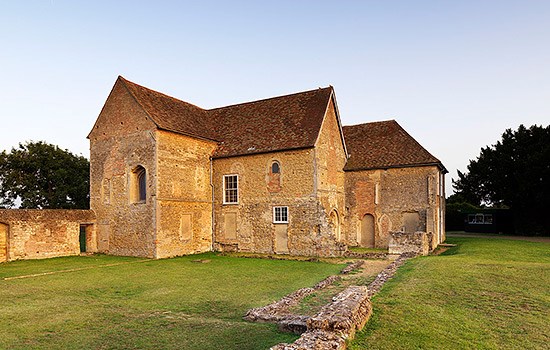
Visit Denny Abbey and the Farmland Museum
Denny Abbey has a unique and fascinating history still traceable in the building and interpreted for visitors by graphic panels.
-
The English Heritage podcast: Secrets of the Knights Templar
Find out more about how the Knights Templar began, their crusading role, the secrets of their military success and the English Heritage sites linked to them.
-
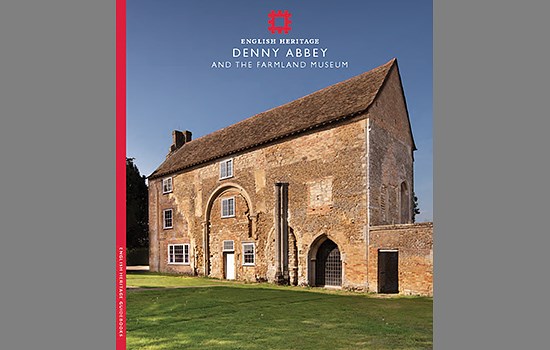
Buy the guidebook
Incorporating all-new site photos, plans, maps and features, this new guide presents the story of this complex and atmospheric site.
-
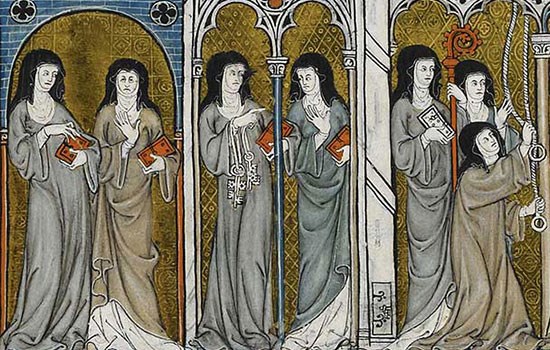
Nuns in medieval England
Four of the monastic ruins English Heritage cares for were once nunneries. Their histories illuminate the important role of nuns in medieval monasticism.
-
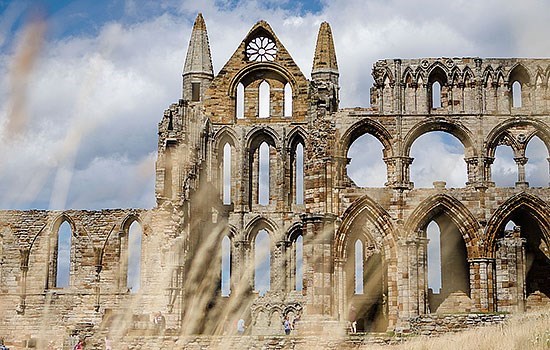
ABBEYS AND PRIORIES
Learn about England’s medieval monasteries and uncover the stories of those who lived, worked and prayed in them.
-
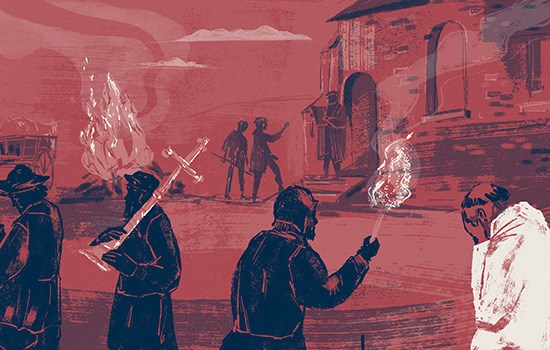
WHAT BECAME OF THE MONKS AND NUNS AT THE DISSOLUTION?
Discover what happened to the many thousands of monks and nuns whose lives were changed forever when, on the orders of Henry VIII, every abbey and priory in England was closed.
-

MORE HISTORIES
Delve into our history pages to discover more about our sites, how they have changed over time, and who made them what they are today.

